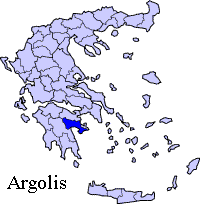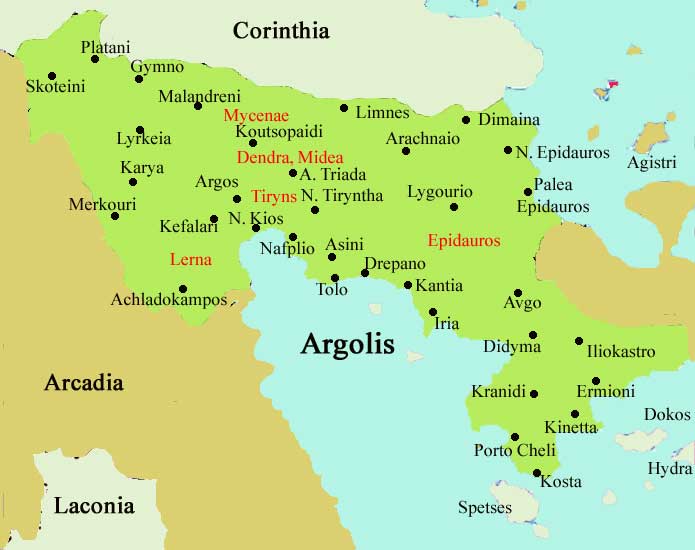|
|
The Pyramid of Hellinikon is located in the plain of Argolid. Traditionally considered to be the base of a military outpost of the hellenistic era in the 1990's it was dated to prehistoric times. Location At the South-eastern edge of the plain of Argolid, near the springs of the Erasinos river (nowadays 'Kephalari' or Kefalari) and on the main arterial road which in antiquity lead from Argos to Tegea and the rest of Arcadia and Kynouria, there is a small structure at present known as the Pyramid of Hellenikon. Historical References Although the pyramoid structures of Argolis are of great interest, written references are rather scarce. Pausanias (2nd century A.D.) regards the structure as a "polyandrium" i.e. a group burial monument for the citizens of Argos (Description of Greece: 2, 25, 7). In particular, for the pyramid at Hellenikon writes: " ...walking on the road away from from Argos towards Epidaurus there is a pyramid structure on our right, it is adorned with shields in the Argolic style..." and he continues to say that the pyramid was erected after the fratricidal battle between the twin brothers, Proetus and Akrisius, during a war of succession following the death of their father, king Avas of Argos. The battle ended in a deadlock and the pyramid was erected as a burial monument in honour of the fallen in this battle. Pausanias also says that, in this battle, shields were employed for the first time. This later remark by Pausanias is indicative of the great antiquity of the structure. Dating Arvanitopoulos believed the monument dates to the Mycenean era (1600 BC-1100 BC). Tsountas,Manat,Curtius and Donaldson believed it is from the 6th century BC. The most common belief, supported by Leak, Ross, Fischer, Clark, Fraccia and Lord was that the structure was from the early hellenistic era, more specifically late 4th century BC. The Academy of Athens published results of dating samples taken from the Hellenikon pyramid (9-2-1995). Dating measurements were performed by the Laboratory of Archaeometry at Democritus Research Institute in Athens and by the Nuclear Dating Laboratory of the department of Physics at the University of Edinbourgh in Scotland. The new and experimental method of Optical Thermoluminescence was employed to date samples taken from the pyramid. It was determined that the samples which had been tested had been quarried at about 2720 B.C.± 580 years. The method used, while scientifically sound, has yet to be calibrated. The results, producing a date considered too early for the structure, have not been accepted by the archaeological community. In the absence of a full excavation, the exact dating of the structure will remain unknown. Adamantios Sampson, Archaeologist and Ephor of Antiquities, writing in the Magazine Archaeologia kai Technes (December 1995) repeats the accepted line that "the excavational data and our knowledge of the protohelladic period in the entire Greek area exclude the constuction of similar edifices in such early years". Links
Retrieved from "http://en.wikipedia.org/"
 |
|
|||||||||||||||||

